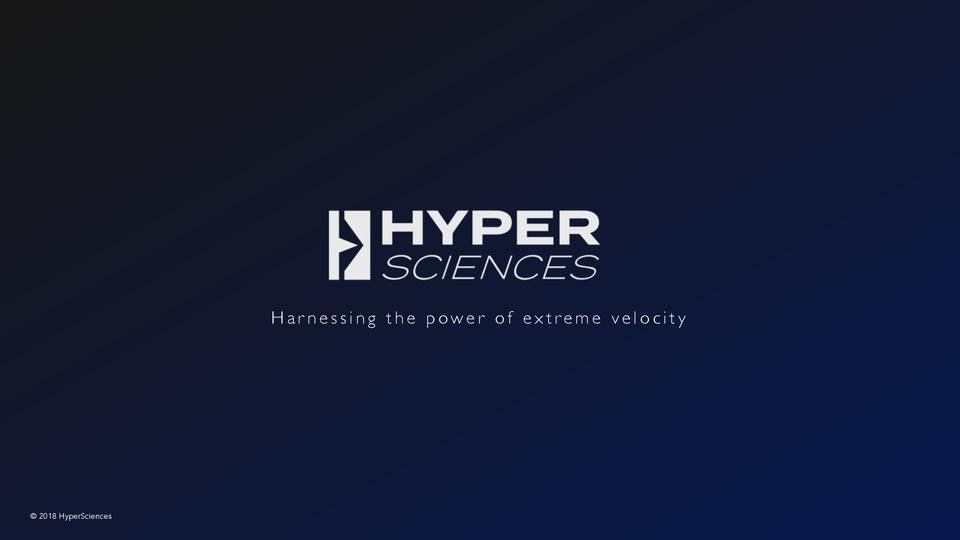“Rocket science” engineer creates a new form of digging: instead of using drilling, HyperSciences has designed a bullet to be shot at Mach 5 speeds shoots and pulverizes hard rocks. With this bullet, HyperSciences should be able to bring down the cost and speed of deep earth drilling, allowing for newly economic applications in geothermal energy harvesting, oil digging, and tunnel boring. NASA contracts imply that for short distance launches, HyperSciences also substitutes for small rockets.
Deal
https://www.seedinvest.com/hypersciences.inc/series.a
Minimum: $200 Crowd Note, Aug 2018
- https://www.geekwire.com/2015/space-engineer-mark-russell-has-a-plan-to-harvest-energy-from-the-earth-using-rockets/
- https://www.seattletimes.com/business/technology/spokane-startup-led-by-blue-origin-vet-raises-13-million-to-drill-for-clean-energy/
- http://www.hypersciences.com/team/
- https://www.inlander.com/spokane/drilling-into-the-future/Content?oid=2494068
Decision
Yes.
| Check | Pass/Fail |
| 1. A syndicate lead who has been investing for at least five years and has at least one notable, unicorn investment | Fail: Not sure who the syndicate lead is |
| 2. A startup that is based in Silicon Valley | Fail: 1314 S. Grand Blvd., Suite 2-133 Spokane, WA 99202 |
| 3. A start that has at least two founders (with two, you have a backup in case one quits) | Fail: Only Mark Russell, though reading through the circular, there’s some weird stuff going on. |
| 4. A startup that has a product or service that is already in the market (you’re not qualified to invest in startups that haven’t released their products—and frankly you don’t need to take this risk.) | Fail: Only grants, research partnerships, and other stuff. |
| 5. A startup that has either (a) six months of continuous user growth or (b) six months of revenue. | Fail: Though the NASA contract just took place. |
| 6. A startup that has notable investors. | Pass: Mike McSherry, Boost & Swype ($100MM to Nuance) |
| 7. A startup that, post-funding, will have eighteen months of cash remaining, commonly referred to as runway (ask the founder and syndicate lead how many months of runway they will have post-funding) | Pass: Yes, $20k in ops cost a month, with CEO compensation at $250k a year. |
Why investing?
- Hard science startup that has contracts with NASA, Shell. (Big moat.)
- CEO is a bonafide nerd, worked for Bezos at Blue Origin.
- Mike McSherry seems like a legitimate investor.
What the risks are
- Market risk—how much longer will it take for HyperSciences to go to market? What will the price point look like? What are margin percentages and how many customers are there?
- People risk—who is the team? There’s only the CEO. As a engineer, he may lack the financial and business savvy to fundraise more, run and scale a team. McSherry may help to protect investment, but uncertain.
- Fundamental business risk — this doesn’t seem like much of a big venture investment in terms of 10x return in under 10 years. Unless infrastructure spending, energy, or space exploration start bringing back serious economic returns and thus more activity, this is going to be a one to three decade for the kinds of returns we’re thinking. And even then, maybe other competitors come. (The VC question of “why now?”)
What has to go right for the startup to return money on investment
- First got the Shell grant three years ago. For this investment to make money, it needs to be able to find a recurring business model in one of the four applications it’s looking for (geothermal, oil and gas, space, transportation). At this point it sounds like space would be the industry to keep the bills on, but the other B2B applications are looking weak (geothermal markets are going down as electric becomes cheaper, fracking becomes cheaper. Infrastructure would require more Hyperloops, or govt. contracts.)
- If the initial industry isn’t what does it, HyperSciences needs to leverage its deep knowledge of bullet rockets and go either up or down the value chain. Whether this means collecting and selling data, new applications, or we suddenly are using HyperSciences for hyper lucrative space mineral mining.
- Lastly, acquisition by a promising company like Blue Origin, SpaceX, or even Virgin’s group would be the only short term exit. This would maybe be a 3-5x return. In a hilarious and unlikely reach, Schlumberger: https://en.wikipedia.org/wiki/Schlumberger

